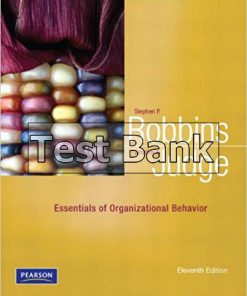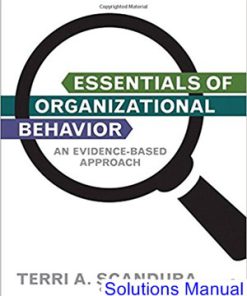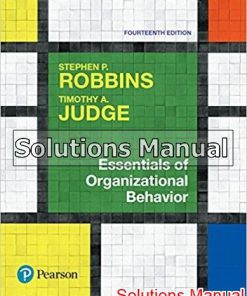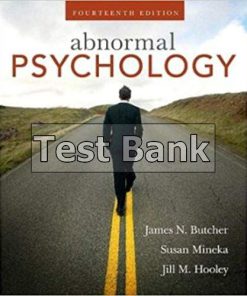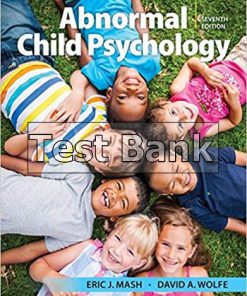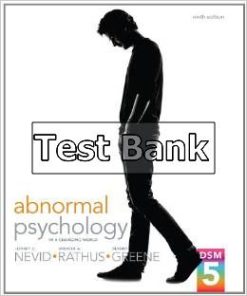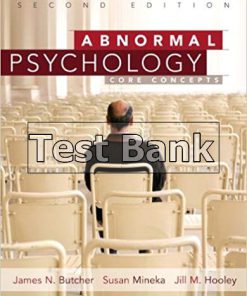Essentials of Organizational Behavior 2nd Edition Scandura Test Bank
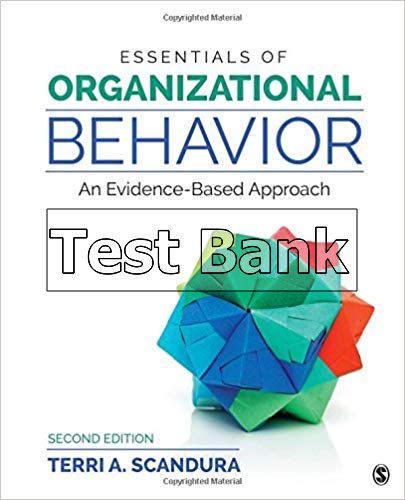
Product details:
- ISBN-10 : 1506388469
- ISBN-13 : 978-1506388465
- Author: Terri A. Scandura
Concise, practical, and based on the best available research, Essentials of Organizational Behavior: An Evidence-Based Approach, Second Edition equips students with the necessary skills to become effective leaders and managers. Author Terri A. Scandura uses an evidence-based approach to introduce students to new models proven to enhance the well-being, motivation, and productivity of people in the work place. Experiential exercises, self-assessments, and a variety of real-world cases and examples provide students with ample opportunity to apply OB concepts and hone their critical thinking abilities.
Table contents:
SECTION I • INTRODUCTION
CHAPTER 1 • What Is Organizational Behavior?
What Is Organizational Behavior?
Evidence-Based Management
What Is Critical Thinking?
Outcomes in Organizational Behavior
Levels of Analysis in Organizational Behavior
How OB Research Increases Employee Performance
Plan for This Textbook
Leadership Implications: Thinking Critically
SECTION II • UNDERSTANDING INDIVIDUALS IN ORGANIZATIONS
CHAPTER 2 • Personality and Person–Environment Fit
What Is Personality?
Myers-Briggs Type Indicator
The Big Five
Personality Traits and Health Research
Other Relevant Personality Traits
Psychological Capital
Person–Environment Fit
Leadership Implications: Understanding Others
CHAPTER 3 • Emotions and Moods
Emotions and Moods at Work
Moods
Emotional Labor
Emotional Intelligence
Emotional Contagion
Leadership Implications: Mindful Coaching
CHAPTER 4 • Attitudes and Job Satisfaction
What Is an Attitude?
Job Satisfaction
Job Search Attitudes
Organizational Commitment
Perceived Organizational Support
Psychological Empowerment
Leadership Implications: Creating Meaning at Work
CHAPTER 5 • Perception, Decision-Making, and Problem-Solving
Understanding Why Perceptual Biases Exist
Employability: Self-Fulfilling Prophecies During the Application Process
Individual Decision-Making
The Rational Decision-Making Model
Prospect Theory
Intuition
Decision Traps
Creative Problem-Solving
Leadership Implications: Making Ethical Decisions
SECTION III • INFLUENCING AND MOTIVATING EMPLOYEES
CHAPTER 6 • Leadership
What Is Leadership?
Path–Goal Theory
Leader–Member Exchange
The Importance of Trust
Full-Range Leadership Development
Moral Approaches
Leadership Implications: Flexibility Matters
CHAPTER 7 • Power and Politics
The Difference Between Power and Influence
Power
Influence Strategies
Impression Management
Perceptions of Organizational Politics
Political Skill
Leadership Implications: Managing With Power
CHAPTER 8 • Motivation: Core Concepts
What Is Motivation?
Needs Theories
Goal Setting
Job Characteristics Theory
The Importance of Fairness
Expectancy Theory
The Pygmalion Effect
The Galatea Effect
The Golem Effect
Leadership Implications: Who Will Lead?
CHAPTER 9 • Motivation: Applications
Reinforcement Theory
Social Learning Theory
Intrinsic Versus Extrinsic Rewards
Self-Determination Theory
Performance Management
Problems With Performance Reviews
Feedback Seeking
Leadership Implications: Motivating With Rewards
SECTION IV • BUILDING RELATIONSHIPS
CHAPTER 10 • Group Processes and Teams
What Is a Team?
Team Purpose
Team Development
Team Effectiveness
Team Decision-Making
Team Challenges
Leadership Implications: Empowering the Team
CHAPTER 11 • Managing Conflict and Negotiation
What Is Conflict?
Conflict Resolution Styles
Team Conflict and Performance
Resolving Conflict Across Cultures
Third-Party Interventions
Negotiation
Leadership Implications: Perspective Taking
CHAPTER 12 • Organizational Communication
What Is Organizational Communication?
Barriers to Effective Communication
Communication Networks
Electronic Communication
Cross-Cultural Communication
Nonverbal Communication
Leadership Implications: The Management of Meaning
CHAPTER 13 • Diversity and Cross-Cultural Adjustments
Diversity
Generations at the Workplace
What Is Culture?
Developing Global Leaders
Culture Shock
Expatriate Adjustment
Leadership Implications: Becoming a Global Leader
SECTION V • LEADERS AS CHANGE AGENTS
CHAPTER 14 • Organizational Culture
What Is Organizational Culture?
Markets, Bureaucracies, and Clans
Strong Organizational Cultures
Socialization
Organizational Climate
Leadership Implications: Culture Change
CHAPTER 15 • Leading Change and Stress Management
Forces Driving Organizational Change
Planned Organizational Change
Resistance to Change
Leading Change
Stress in the Context of Organizational Change
What Is Stress?
Leadership Implications: Helping Employees Cope
Appendix 1: The Scientific Method in Organizational Behavior
Appendix 2: Organizational Structure
Glossary
Notes
Author Index
Subject Index
People also search:
essentials of organizational behavior 2nd edition
essentials of organizational behavior an evidence-based approach 2nd edition
essentials of organizational behaviour second canadian edition
chapter 2 organizational behavior
essentials of organizational behavior summary
Instant download after Payment is complete



